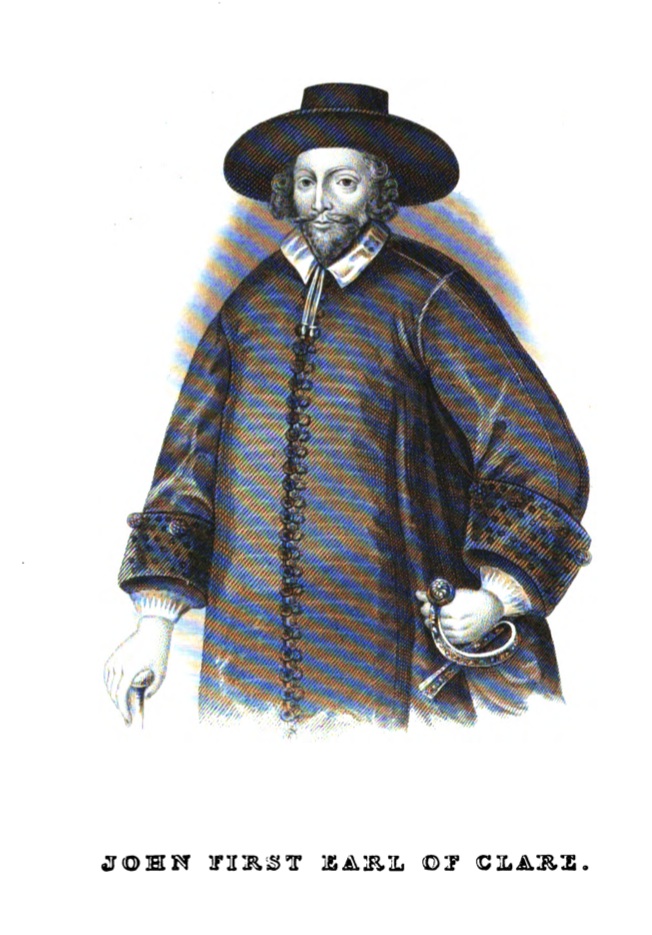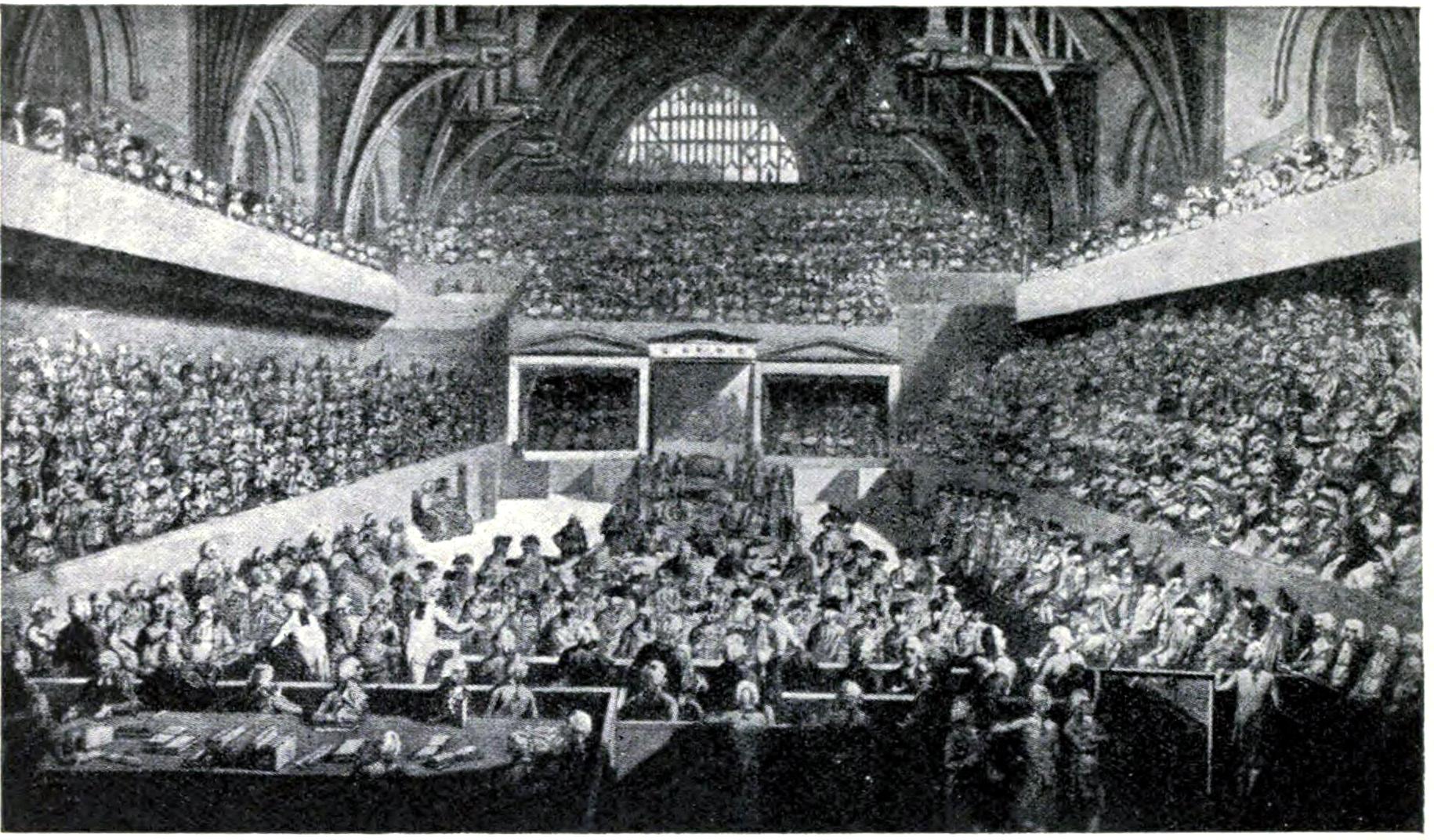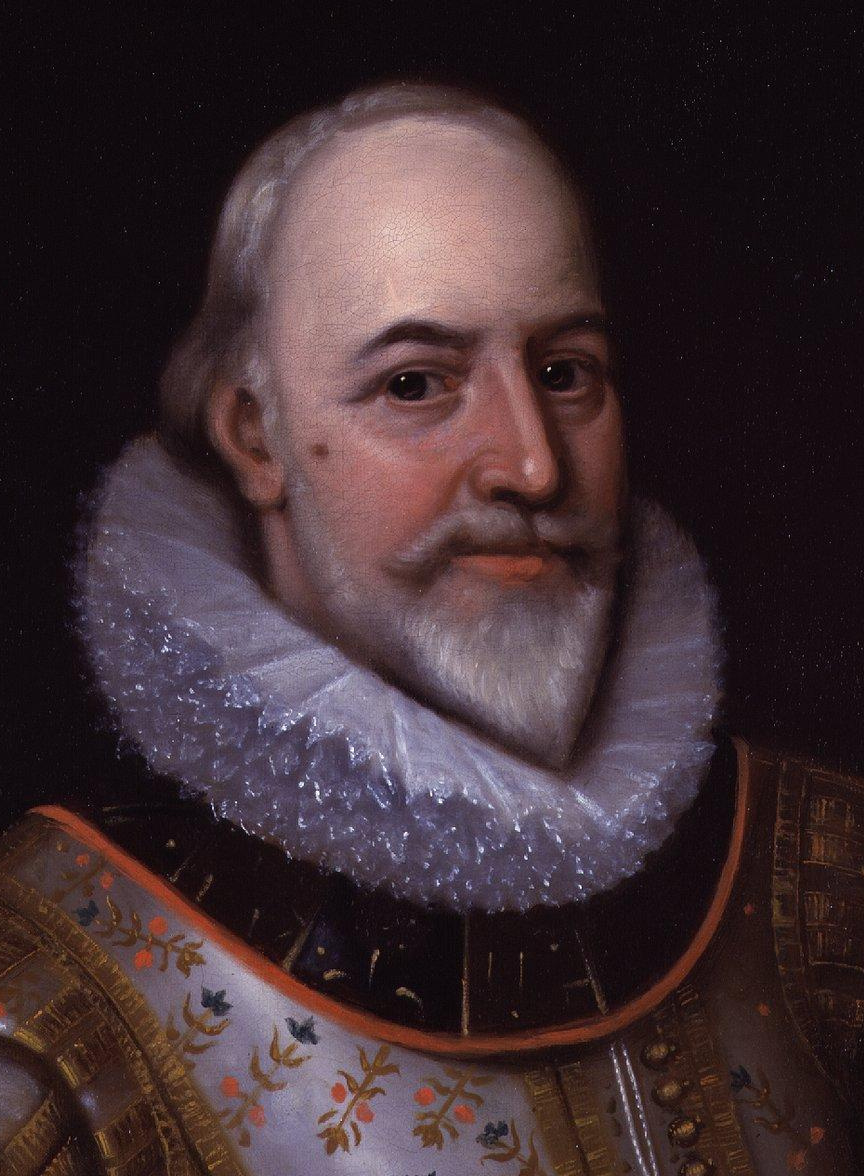|
Guildford Slingsby
Guilford Slingsby (1610–1643) was a member of the Yorkshire gentry who was confidential secretary to Thomas Wentworth, 1st Earl of Strafford, and present during the trial which ended in his execution in April 1641. Slingsby sat in the Parliament of Ireland as Member of Parliament for Carysfort from 1634 to 1635, and during Strafford's period as Lord Deputy of Ireland was appointed to several administrative posts. When the First English Civil War began in August 1642, he raised a regiment for the Royalist army in Northern England; he was badly wounded in a skirmish near Guisborough on 16 January 1643 and died three days later. Personal details Guilford Slingsby was born in 1610, eldest son of Sir Guylford Slingsby, (1565-1631) and Margaret Walter (died after 1650). His grandmother was Mary Percy, sister of the Percy Earl of Northumberland, traditionally one of the most powerful families in Northern England. The Slingsbys were a large family distributed throughout North ... [...More Info...] [...Related Items...] OR: [Wikipedia] [Google] [Baidu] |
Thomas Wentworth, 1st Earl Of Strafford
Thomas Wentworth, 1st Earl of Strafford, (13 April 1593 ( N.S.)12 May 1641), was an English statesman and a major figure in the period leading up to the English Civil War. He served in Parliament and was a supporter of King Charles I. From 1632 to 1640 he was Lord Deputy of Ireland, where he established a strong authoritarian rule. Recalled to England, he became a leading advisor to the King, attempting to strengthen the royal position against Parliament. When Parliament condemned Lord Strafford to death, Charles reluctantly signed the death warrant and Strafford was executed. He had been advanced several times in the Peerage of England during his career, being created 1st Baron Wentworth in 1628, 1st Viscount Wentworth in 1629, and, finally, 1st Earl of Strafford in January 1640. He was known as Sir Thomas Wentworth, 2nd Baronet, between 1614 and 1628. Early life Wentworth was born in London. He was the son of Sir William Wentworth, 1st Baronet, of Wentworth Woodhouse, near ... [...More Info...] [...Related Items...] OR: [Wikipedia] [Google] [Baidu] |
Comptroller Of The Navy (Navy Board)
The Comptroller of the Navy originally called the Clerk Comptroller of the Navy was originally a principal member of the Admiralty in the 16th century, English Navy Royal, and later the British Royal Navy, Navy Board. From 1512 until 1832, the Comptroller was mainly responsible for all British naval spending and directing the business of the Navy Board from 1660 as its chairman. The position was abolished in 1832 when the Navy Board was merged into the Board of Admiralty. The comptroller was based at the Navy Office (Royal Navy), Navy Office. History The post was originally created in 1512 during the reign of Henry VIII of England when the post holder was styled as the ''Clerk Comptroller'' until 1545 in 1561 the name was changed to ''Comptroller of the Navy''. He presided over the Board from 1660, and generally superintended the business of the Navy Office, and was responsible for the offices dealing with bills, accounts and wages during the sixteenth and seventeenth centuries. By ... [...More Info...] [...Related Items...] OR: [Wikipedia] [Google] [Baidu] |
Henrietta Maria
Henrietta Maria (french: link=no, Henriette Marie; 25 November 1609 – 10 September 1669) was Queen of England, Scotland, and Ireland from her marriage to King Charles I on 13 June 1625 until Charles was executed on 30 January 1649. She was mother of his sons Charles II and James II and VII. Contemporaneously, by a decree of her husband, she was known in England as Queen Mary, but she did not like this name and signed her letters "Henriette R" or "Henriette Marie R" (the "R" standing for ''regina'', Latin for "queen".) Henrietta Maria's Roman Catholicism made her unpopular in England, and also prohibited her from being crowned in a Church of England service; therefore, she never had a coronation. She immersed herself in national affairs as civil war loomed, and in 1644, following the birth of her youngest daughter, Henrietta, during the height of the First English Civil War, was compelled to seek refuge in France. The execution of Charles I in 1649 left her impoverished. ... [...More Info...] [...Related Items...] OR: [Wikipedia] [Google] [Baidu] |
Netherlands
) , anthem = ( en, "William of Nassau") , image_map = , map_caption = , subdivision_type = Sovereign state , subdivision_name = Kingdom of the Netherlands , established_title = Before independence , established_date = Spanish Netherlands , established_title2 = Act of Abjuration , established_date2 = 26 July 1581 , established_title3 = Peace of Münster , established_date3 = 30 January 1648 , established_title4 = Kingdom established , established_date4 = 16 March 1815 , established_title5 = Liberation Day (Netherlands), Liberation Day , established_date5 = 5 May 1945 , established_title6 = Charter for the Kingdom of the Netherlands, Kingdom Charter , established_date6 = 15 December 1954 , established_title7 = Dissolution of the Netherlands Antilles, Caribbean reorganisation , established_date7 = 10 October 2010 , official_languages = Dutch language, Dutch , languages_type = Regional languages , languages_sub = yes , languages = , languages2_type = Reco ... [...More Info...] [...Related Items...] OR: [Wikipedia] [Google] [Baidu] |
Tower Of London
The Tower of London, officially His Majesty's Royal Palace and Fortress of the Tower of London, is a historic castle on the north bank of the River Thames in central London. It lies within the London Borough of Tower Hamlets, which is separated from the eastern edge of the square mile of the City of London by the open space known as Tower Hill. It was founded towards the end of 1066 as part of the Norman Conquest. The White Tower (Tower of London), White Tower, which gives the entire castle its name, was built by William the Conqueror in 1078 and was a resented symbol of oppression, inflicted upon London by the new Normans, Norman ruling class. The castle was also used as a prison from 1100 (Ranulf Flambard) until 1952 (Kray twins), although that was not its primary purpose. A grand palace early in its history, it served as a royal residence. As a whole, the Tower is a complex of several buildings set within two concentric rings of defensive walls and a moat. There were severa ... [...More Info...] [...Related Items...] OR: [Wikipedia] [Google] [Baidu] |
Denzil Holles, 1st Baron Holles
Denzil Holles, 1st Baron Holles PC (31 October 1598 – 17 February 1680) was an English statesman, best remembered as one of the Five Members whose attempted arrest by Charles I in January 1642 sparked the First English Civil War. When fighting began in August, Holles raised a Parliamentarian regiment which fought at Edgehill before it was nearly destroyed at Brentford in November 1642. This marked the end of Holles' military career and he became leader of the Parliamentarian 'Peace Party', those who favoured a negotiated settlement with the king. A social conservative from a wealthy family, he came to see political radicals like the Levellers and religious Independents like Oliver Cromwell as more dangerous than the Royalists. Following victory in the First English Civil War, he led those who opposed Cromwell and his supporters, and was one of the Eleven Members suspended in June 1647. Recalled prior to the Second English Civil War in June 1648, he was excluded again by P ... [...More Info...] [...Related Items...] OR: [Wikipedia] [Google] [Baidu] |
Parliament Of England
The Parliament of England was the legislature of the Kingdom of England from the 13th century until 1707 when it was replaced by the Parliament of Great Britain. Parliament evolved from the great council of bishops and peers that advised the English monarch. Great councils were first called Parliaments during the reign of Henry III (). By this time, the king required Parliament's consent to levy taxation. Originally a unicameral body, a bicameral Parliament emerged when its membership was divided into the House of Lords and House of Commons, which included knights of the shire and burgesses. During Henry IV's time on the throne, the role of Parliament expanded beyond the determination of taxation policy to include the "redress of grievances," which essentially enabled English citizens to petition the body to address complaints in their local towns and counties. By this time, citizens were given the power to vote to elect their representatives—the burgesses—to the H ... [...More Info...] [...Related Items...] OR: [Wikipedia] [Google] [Baidu] |
Impeachment In The United Kingdom
Impeachment is a process in which the Parliament of the United Kingdom may prosecute and try individuals, normally holders of public office, for high treason or other crimes and misdemeanours. First used to try William Latimer, 4th Baron Latimer during the English Good Parliament of 1376, it was a rare mechanism whereby Parliament was able to arrest and depose ministers of the Crown. The last impeachment was that of Henry Dundas, 1st Viscount Melville in 1806; since then, other forms of democratic scrutiny (notably the doctrine of collective cabinet responsibility) have been favoured and the process has been considered as an obsolete—but still extant—power of Parliament. Procedure The procedure for impeachment was described in the first edition of ''Erskine May'' thus: any member of the House of Commons with proof of an individual's crimes could charge them of said crime and move for their impeachment. If the House of Commons voted to impeach, the mover would be ordere ... [...More Info...] [...Related Items...] OR: [Wikipedia] [Google] [Baidu] |
List Of Vice-admirals Of Munster
This is a list of the vice-admirals of Munster, a province in the south of Ireland. Prior to 1585 the whole of Ireland was served by a single vice-admiral, namely Thomas Radcliffe, 3rd Earl of Sussex (1558–1565), Gerald Fitzgerald, 11th Earl of Kildare (1564–1573) and Thomas Butler, 10th Earl of Ormonde (1585). Separate vice-admiralties were then established for Munster in 1585, for Ulster by 1602, for Leinster by 1612 and for Connaught by 1615. Vice-admirals of Munster Source (1585–1561): Source (1661–): * 1585 John Norris * 1585–1598 ''no appointment known'' * 1598 Henry Cowper * 1599 George Warham * 1599–1606 ''no appointment known'' * 1606 Thomas Smith * 1607 Humphrey Jobson * 1607–1610 ''no appointment known'' * 1610–1613 William Howard, Lord Howard of Effingham * 1613 Sir John Ferne * 1613–1624 ''no appointment known'' * 1624–1633 Henry Cary, 1st Viscount Falkland * 1634–1641 Thomas Wentworth, 1st Viscount Wentworth * 1641 Robert Sydney, 2nd Earl ... [...More Info...] [...Related Items...] OR: [Wikipedia] [Google] [Baidu] |
Irish Board Of Ordnance
The Board of Ordnance in the Kingdom of Ireland (1542–1800) performed the equivalent duties of the British Board of Ordnance: supplying arms and munitions, overseeing the Royal Irish Artillery and the Irish Engineers, and maintaining the fortifications in the island. Following the Acts of Union 1800, the Board was abolished and the duties taken over by the United Kingdom Board of Ordnance. The various officials of the Board were compensated with pensions for their loss of salary and emoluments. Officials of the Board of Ordnance ''lists are incomplete before 1760'' Master-General of the Ordnance Salary in 1800: £1,500 * In 1539: Sir John Travers * 1559–1587: Edward Maria Wingfield * 1588: Sir George Carew * 1592: Sir George Bourchier * 1605: Oliver St John, 1st Viscount Grandison * 1614: ... * 1617: Toby Caulfeild, 1st Baron Caulfeild * 1627: William Caulfeild, 2nd Baron Caulfeild * 1634: Sir John Borlase (jointly with Sir Thomas Lucas) * 1648: Roger Boyle, 1st Baron B ... [...More Info...] [...Related Items...] OR: [Wikipedia] [Google] [Baidu] |
Algernon Percy, 10th Earl Of Northumberland
Algernon Percy, 10th Earl of Northumberland, 4th Baron Percy, KG, JP (29 September 160213 October 1668) was an English aristocrat, and supporter of the Parliamentary cause in the First English Civil War. The Percies had been the leading family in Northern England for centuries, and one of the richest, a combination that made them both essential to a stable regime, and dangerous. His ancestors included Henry "Hotspur", who led two rebellions, and died at Shrewsbury in 1405; his great-uncle was executed for treason in 1537, as was his uncle, the Earl of Essex, in 1601. His grandfather died in the Tower of London, where his father Henry Percy was held from 1605 to 1621. From 1569 to 1630, the Percies were barred from visiting their estates in the North. This made his support, and that of his cousin, the 3rd Earl of Essex, an important asset for Parliament when the civil war began in 1642. His position as Lord High Admiral also helped secure the Royal Navy, a decisive factor ... [...More Info...] [...Related Items...] OR: [Wikipedia] [Google] [Baidu] |
Lord President Of Munster
The post of Lord President of Munster was the most important office in the English government of the Irish province of Munster from its introduction in the Elizabethan era for a century, to 1672, a period including the Desmond Rebellions in Munster, the Nine Years' War, and the Irish Rebellion of 1641. The Lord President was subject to the chief governor, but had full authority within the province, extending to civil, criminal and church legal matters, the imposition of martial law, official appointments, and command of military forces. Some appointments to military governor of Munster were not accompanied by the status of President. The width of his powers led to frequent clashes with the longer established courts, and in 1622 he was warned sharply not to "intermeddle" with cases which were properly the business of those courts. He was assisted by a Council whose members included the Chief Justice of Munster, another justice and the Attorney General for the Province. By 1620 his ... [...More Info...] [...Related Items...] OR: [Wikipedia] [Google] [Baidu] |







